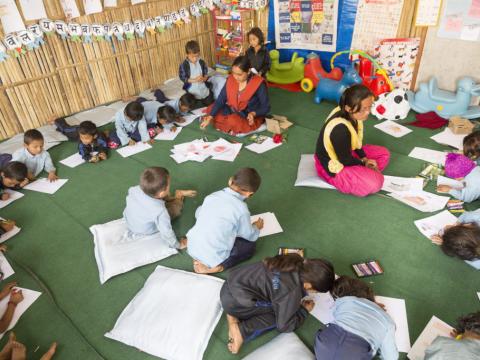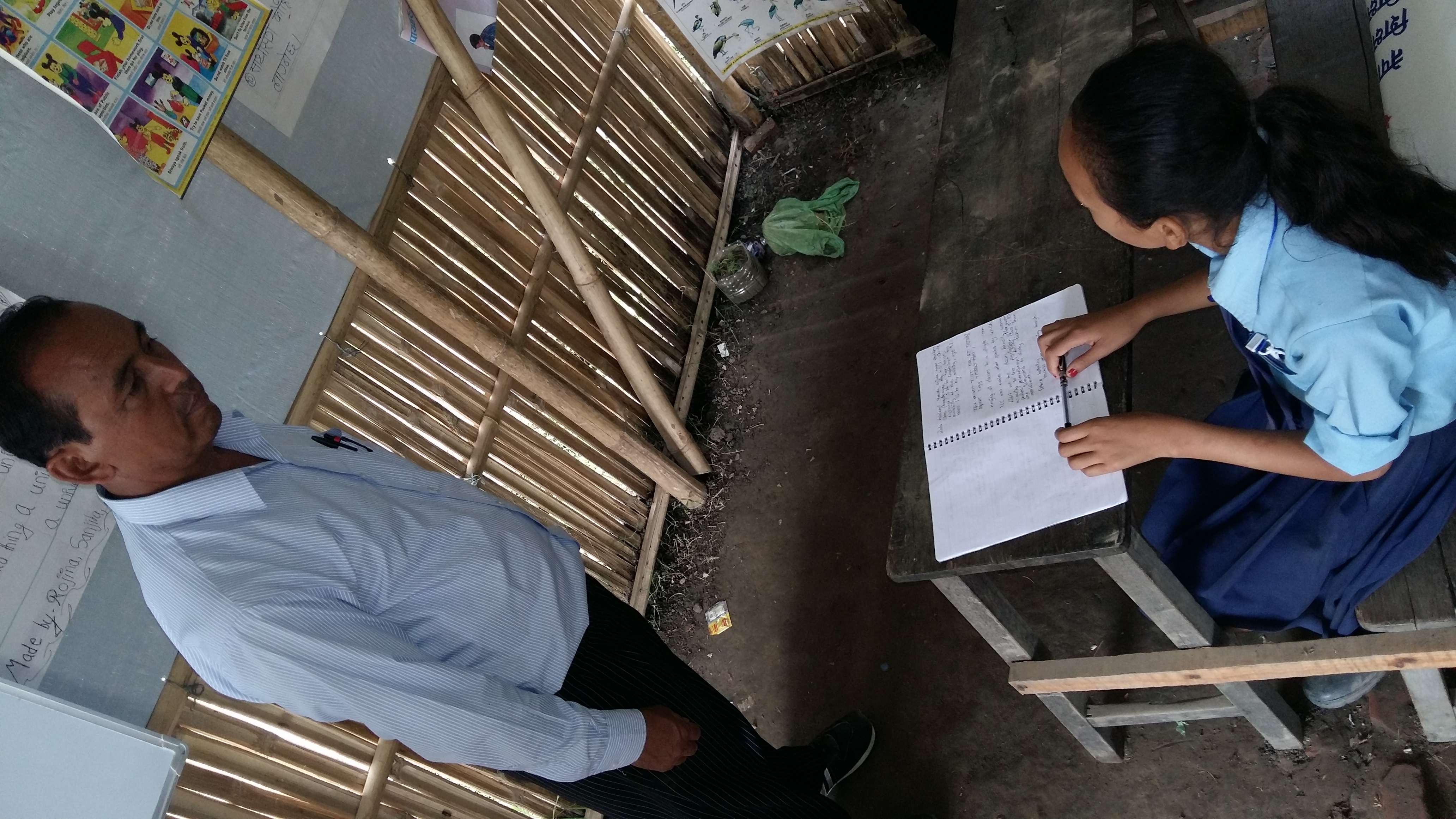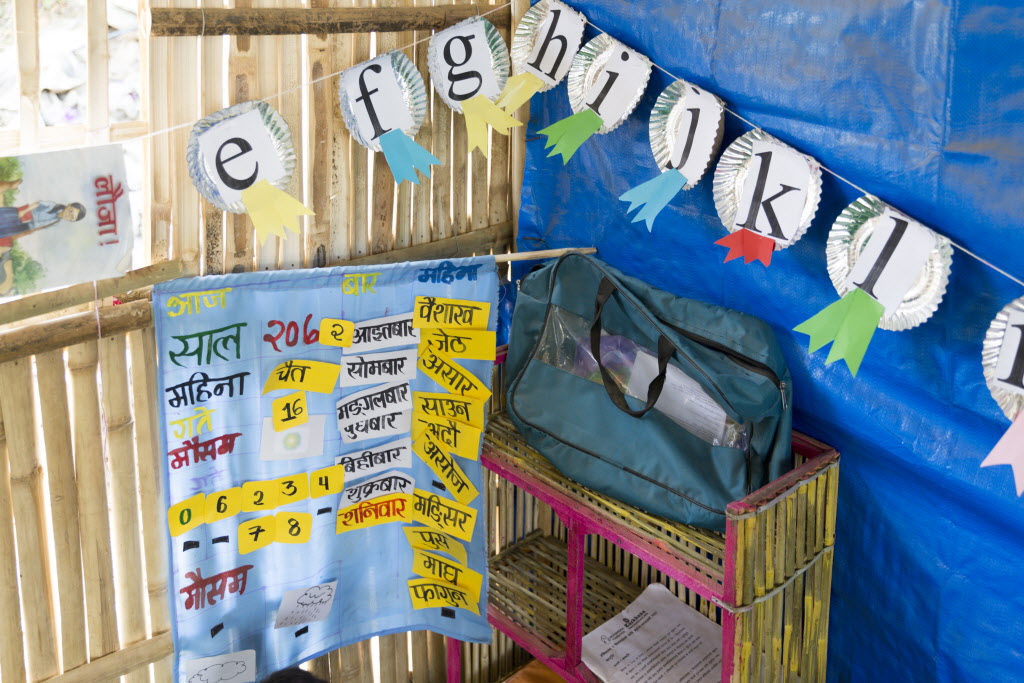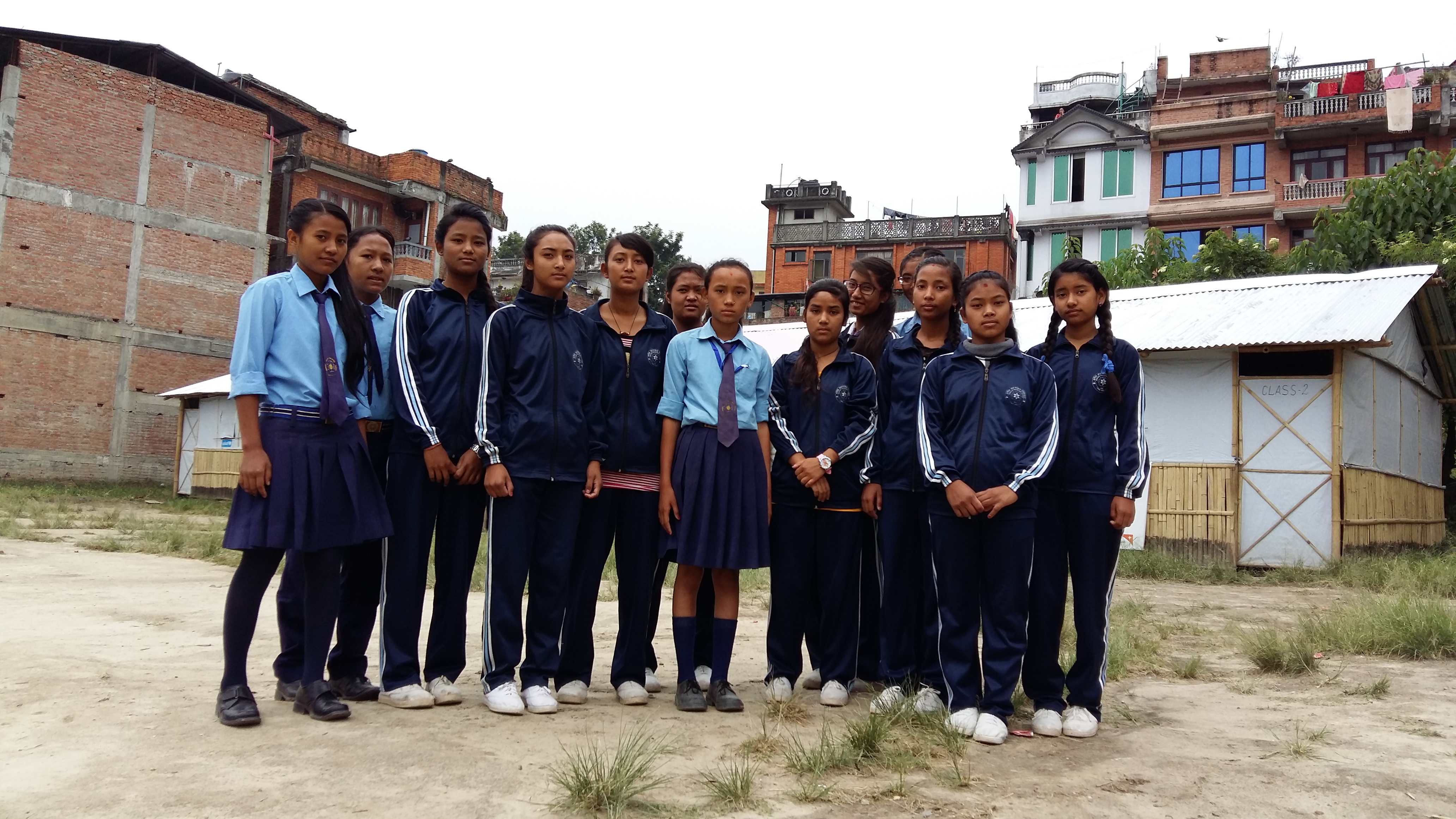Enhancing education for child survivors of the Nepal earthquake

One year after a devastating earthquake struck Nepal, World Vision has responded by training teachers, repairing damaged schools, and opening 35 child friendly spaces to keep children safe and supported immediately after the earthquake. World Vision also set up temporary learning centres where over 8,000 children were able to get back to school and continue learning.
Nirmala continues learning without fear
Nirmala Thing, 12, from Kavrepalanchok is a 5th grader at a Secondary School in Dudhpati, Bhaktapur and also an earthquake survivor. She now has been able to overcome her fear of earthquakes with support from her teachers in temporary learning center (TLC) built by World Vision in response to the earthquake in Nepal, one year ago.
Nirmala and her teacher in class. (Photo credit: Thomas Bogaty / World Vision)
“Initially I was very terrified to come to school due to cracked classrooms and infrastructures,” says Nirmala. “My parents were reluctant to send me and my brother to school because it was not safe.”
Recounted the horrifying day of 25 April when the earthquake flattened her house to the ground, she said, “I felt as though a bulldozer hit my house. The ground shook so hard, and I did not know what to do besides just running here and there.”
The TLC built for her school was constructed mainly using bamboo and corrugated galvanized iron sheets. It can accommodate learning activities safely with children, even during the many aftershocks that followed the quake. The TLC is decorated with creative and colourful learning materials to enhance children’s learning and enjoyment.
“The learning materials and decorations in the TLC crafted by teachers and volunteers have enriched my education,” says Nirmala. “I tend to learn better through those decorative resources by participating with teachers and my classmates.”
Decorations and learning materials adorn a temporary learning centre in Nepal. (Photo credit: Max Greenstein / World Vision)
She further stated that aftershocks do not terrify her as much. “I love TLC and school,” she said with a big grin. Nirmala shared that she loves to play rubber ball with her friends and computer is her best subject. She hopes to become a computer teacher when she grows up.
Ganga Prasad Yakami, principal at the school agreed that TLC had been a major help to facilitate earthquake survivor students continuing their education. “During TLC construction, were also guided on how to do classroom management, to teach post disaster, to prepare education materials and to increase student participation using creative learning materials to help reduce students trauma,” said Yakami.
Nirmala and friends are learning once more. (Photo credit: Thomas Bogaty / World Vision)
Education in emergencies
Education in emergencies is a life-saving intervention: it provides a safe place for children to learn and play, provides protection from further violence and exploitation such as forced labour, sexual exploitation and abuse, early child marriage, and recruitment into armed groups, and other life-threatening, often criminal activities. Education is an important tool to provide children and communities with a sense of normalcy following a disaster, instilling hope and mitigating the psychosocial impact of violence, natural disasters and displacement.


